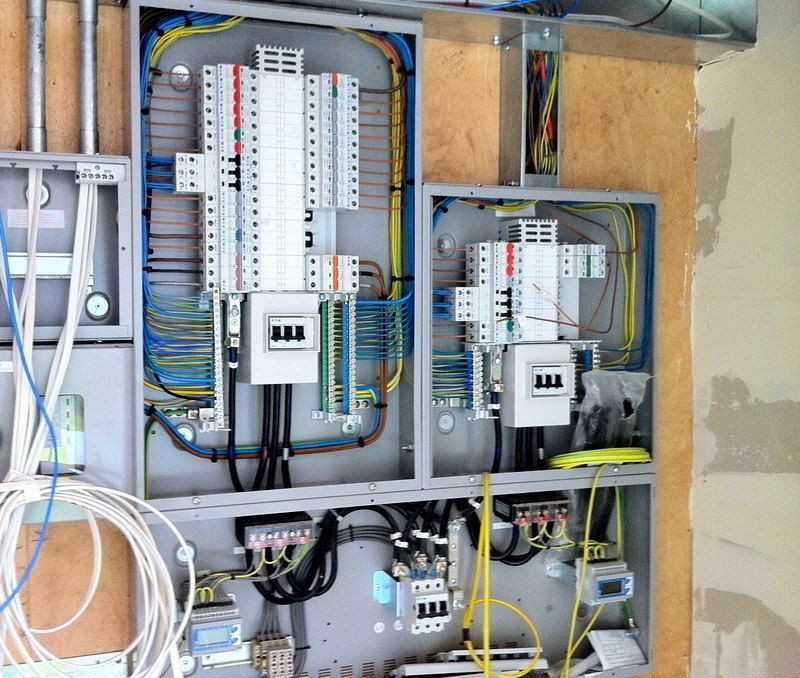Dependable and Professional BRE Electrical Services for Every Task
Dependable and Professional BRE Electrical Services for Every Task
Blog Article
The Ultimate Overview to Electrical Installment: Tips and Strategies for a Safe and Effective Home Electrical Wiring System
In the realm of home upkeep, couple of elements are as vital yet frequently forgotten as the electrical wiring system. By discovering the subtleties of electrical security procedures and energy-saving practices, this thorough guide will lose light on the intricacies of home electrical wiring, empowering people to take cost of their home's electric infrastructure.
Understanding Electrical Security Actions
To guarantee the security of both people and residential or commercial property, understanding and carrying out proper electric safety actions is paramount in any home circuitry task. It is vital to conduct an extensive evaluation of the electrical system prior to starting any wiring job to identify prospective hazards or problems that require to be resolved.
Moreover, using the proper tools and equipment is essential for preserving safety and security throughout electrical installations. Insulated gloves, voltage testers, and protective glasses are some of the fundamental safety gear that need to be put on to protect against electric shocks or mishaps. It is likewise important to de-energize circuits prior to servicing them and to label all circuits and breakers plainly to stay clear of confusion.

Crucial Devices for Home Electrical Wiring
Guaranteeing the proper execution of electrical security measures in home circuitry jobs includes utilizing a certain collection of important tools developed to help with the installment procedure properly and safely. Some of the trick devices needed for home wiring projects include a voltage tester for examining online cables, wire strippers for getting rid of insulation from cords, a wire cutter for precisely cutting wires to length, a screwdriver set for protecting electrical parts, electric tape for insulation and securing links, a cable ripper for removing wire sheathing, and a multimeter for determining voltage, existing, and resistance.
Step-by-Step Electrical Installation Guide
Beginning an electrical installation task calls for thorough planning and adherence to safety and security standards. Before starting any kind of work, guarantee you have a thorough plan describing the layout of the electrical system, consisting of the positioning of outlets, buttons, and components. Think about the power demands of each gadget to determine the suitable wire scale and circuit breaker dimensions.
The first action in the setup process is to shut off the power supply to the location where you will certainly be working. Use a voltage tester to confirm that the circuits are de-energized prior to touching any wires. Next, thoroughly eliminate existing fixtures or outlets and separate the cables.
When mounting brand-new electrical wiring, run wires with wall surfaces and ceilings, protecting them in place with ideal fittings. Follow local building regulations and manufacturer directions for proper cable installment and connections. BRE Automation Australia. Make certain to label cables for easy identification and future maintenance

Troubleshooting Common Wiring Issues
Having actually finished the setup procedure as outlined in the previous subtopic, repairing usual electrical wiring concerns is a vital skill for ensuring the security and functionality of your electric system. One typical problem is a stumbled circuit breaker, usually triggered by overloaded circuits or a short circuit. To repair this, locate the breaker panel, identify the stumbled breaker by searching for the one not fully in the "on" placement, and reset it by flipping it completely to see this page "off" and then back to "on." Another prevalent trouble is a faulty outlet, defined by no power or periodic power supply. Make sure the outlet is not controlled by a switch, then make use of a voltage tester to check for power. If there is no power, transform off the circuit, examine the electrical wiring connections for any kind of loose or broken wires, and change the outlet if essential. Continuously flickering lights can suggest loosened circuitry links or an overloaded circuit. To resolve this, check and tighten all wire links in the impacted components and buttons and redistribute the load on the circuit to stabilize the electric need. On a regular basis checking and without delay dealing with these usual electrical wiring problems will certainly keep the safety and security and effectiveness of your home electrical system.
Tips for Energy-Efficient Electrical Equipments
For optimal energy effectiveness in electric systems, carrying out wise techniques and using energy-saving technologies is vital. One key tip for accomplishing an energy-efficient electric system is to update to LED illumination. Appropriate insulation and securing of home windows, doors, and electric outlets can Read Full Report additionally stop energy loss, inevitably minimizing the work on electric systems.
Conclusion
To conclude, executing appropriate security procedures, utilizing crucial tools, complying with a detailed setup guide, fixing common problems, and including energy-efficient suggestions are crucial for a secure and effective home wiring system. By sticking to these methods, property owners can ensure the longevity and functionality of their electric installations. It is essential to prioritize security and efficiency when it pertains to electrical address work in order to stop potential hazards and to preserve a trusted electric system in the home.
Report this page